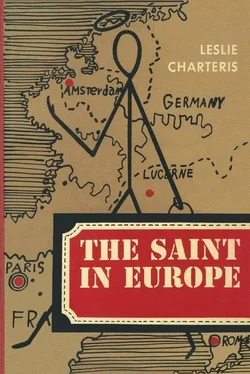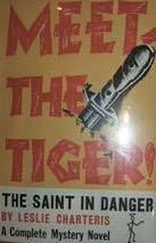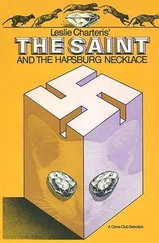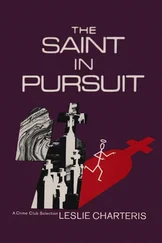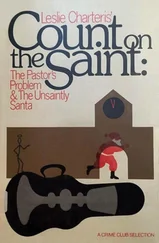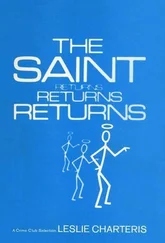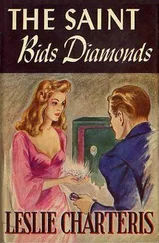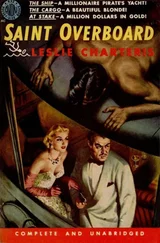Of late Mr Nussberg he knew little, except that he had lived in Detroit and manufactured metal buttons for attachment to cheap overalls, and had in due course died, full of honor and indigestible food. Simon rather suspected that he had been a small man with a bald head and baggy trousers, but he admitted that this suspicion was based on nothing more substantial than the theory that women of Mrs Nussberg’s size and demeanour are usually married by small men with bald heads and baggy trousers. The point was purely academic, anyway: it was now Porphyria Nussberg who carried the burden of a reputedly fabulous fortune on her massive shoulders, and whose well-padded physique, which in some respects did actually resemble that of a camel, should have been speculating anxiously about the size of the needle’s eye through which it might one day be called upon to pass.
Mrs Nussberg had arrived on the same day as the Saint himself, but she had since become far better known. She was popularly referred to by a variety of names, of which “The Queen of Sheba,” “Cleopatra,” and “The American Tragedy” were a fairly representative selection. But to Simon Templar she would always be the Spanish Cow.
From this it should not be nastily assumed that the Saint was unnecessarily vulgar. To those of cosmopolitan education, the Spanish Cow is an allusion hardly less classical than others that had been bestowed upon Porphyria. The Spanish Cow — la vache espagnol — is, curiously enough, a creature of the French mythology, and is indignantly repudiated by Spain. It is the symbol of everything clumsy, inefficient, and absurd. When a Frenchman wishes to say that he speaks English excessively badly, he will tell you that he speaks comme une vache espagnol — like a Spanish Cow. In the same simile he may dance, play bridge, butt into a petting party, or remember that he owes you a few thousand francs. For the benefit of those in search of higher education, it might be explained that this does not stem from any ancient national antagonism or occult anthropomorphic legend; it is, etymologically, a corruption of Basque espagnol, and originated in the belief of French purists that the Basques speak atrociously, but this is not the place to enter that argument. To Simon, the name fitted Mrs Nussberg like a glove, with a pleasing ambivalence that included her swarthy complexion and distinctly bovine build.
She waddled on towards the water’s edge through a cloud of giggles, grins, and whispered comments that were pitched just loud enough to reach her ears, and Simon kicked his toes through the sand and gazed after her thoughtfully. The daily baiting of the Spanish Cow had lost most of its novelty as a spectacle for him, though the rest of the beach showed no signs of tiring of it. It had already rivalled water-skiing among the sports of that season. It had the priceless advantage of costing nothing, and of giving a satisfactory reaction to the most awkward tyro. Goaded far enough, Mrs Nussberg could always be relied upon to give a demonstration in return which dissolved the onlookers into shrieks of laughter. It happened, according to plan, that morning. As Mrs Nussberg tested the temperature of the water with her toes, the Adonis of the beach came swaggering along the rim of wet sand, rippling his rounded muscles — Maurice Walmar, heir to millions and one of the oldest titles to the Almanach de Gotha , a privileged person at any time, and the most daring leader of the new sport. His dark sensual eyes took in the situation at once, and a smile touched his lips. He fell on his knees and bowed his head to the ground in an elaborate mockery of homage.
Mrs Nussberg put out her tongue at him. The beach howled with delight.
“She must be screwy,” opined Myra Campion, fascinated.
The opinion was pretty generally held. Properly provoked, Mrs Nussberg could be depended on to pull the most horrible faces at her tormentors, squawk abuse at them like a trained parrot, and even put her fingers to her nose. Far from bringing forbearance, that apparent screwiness seemed to fan a spark of pure sadism in the onlookers — the same savage instinct that impels urchins to throw stones at an idiot village boy.
“Have you seen that caricature of her outside the Fregate?” asked Miss Campion. “The boy who draws portraits on the beach did it. It’s too perfect. She tried to make them take it down, and they said she could have it if she bought it. They told her she could have it for fifty thousand francs, but it’s still there. In a frame, hanging up in the entrance.”
“I’ll have to take a look at it,” said the Saint. He stood up, dusting the sand from his legs. “Do you think you could get around that buoy again before lunch?”
As he slid easily through the cool smooth water he looked back and saw the bright yellow bathing cap of the Spanish Cow bobbing in the sunlight close to the shore, as she paddled about with her clumsy breast stroke. He pillowed his face in the blue sea and drifted on with a sweep of long effortless arms, gazing down through the crystalline transparency to the misty depths where tiny fish flicked and turned like silver sparks, and decided that the time was ripe for Mrs Nussberg and her jewels to meet Romance.
It all began the day after Simon arrived at Juan-les-Pins. He was sitting on a high stool in a sandwich bar, refreshing his interior with a glass of iced orange juice, when the Spanish Cow came in. Simon did not then know her real name, nor had he become sufficiently interested to christen her, but, observing that she wore voluminous beach pyjamas with broad horizontal stripes of purple and yellow, which made her look like a great blowsy wasp, it is probable that some of the emotion he felt might have been detected by an eagle eye. The Saint’s sense of humor was very human, and the barman looked at him and grinned sympathetically, as one who in his day had also been confronted by the spectacle for the first time. It is therefore possible that the Saint’s face was not quite so woodenly disciplined as a meticulous politeness might have wished. It is possible that one of his eyebrows may have twitched involuntarily, or the corners of his mouth widened a slight half-millimetre, in answer to the barman’s confidence. And then he glanced at the vision again, and saw that it was staring at him through a pair of lorgnettes and pulling faces at him.
The Saint blinked. He regarded his orange juice suspiciously. To a man of his abstemious habits, it was a remarkable hallucination to affront the brain at eleven o’clock in the morning — even in a morning of such potent sunshine as those shores boast in July.
He looked again. Mrs Nussberg put out her tongue in a grimace of bloodcurdling menace.
Simon swayed slightly on his stool. His friends had frequently told him that he was quite mad, but he had never expected to lose his last vestige of sanity in quite so disturbing a way. He turned uneasily to an inspection of the other patrons of the bar, wondering if the portly Dutchman on his left would suddenly seem to be elongating and turning bright green, or if the charming honey-blonde damsel on his right would be pulling off her pink ears and stirring them into her coffee. Instead he found the other customers still of normal shape and hue, smiling broadly. He braced himself to look at the striped vision again. It applied its thumb to its nose and extended its fingers towards him, waggling them with hideous glee.
The charming damsel on his right spoke, through the daze of alarm that was rapidly enveloping him.
“Don’t pay any attention to her,” she said. “She’s always like that.”
“Bless you, darling,” murmured the Saint fervently. “For a moment I thought the heat had got me.”
Читать дальше
